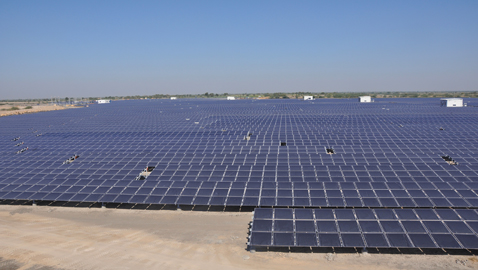
Taking forward the initiative to promote ecologically sustainable growth while addressing the energy security challenge, the Ministry of New and Renewable Energy will implement a scheme for setting up 1,000 MW of grid-connected solar photovoltaic power projects in various parts of the country by central public sector undertakings and organisations functioning under the central government with Viability Gap Funding support of Rs.1,000 crore.
The cost of setting up 1,000 MW solar power capacity is estimated at Rs 6,910 crore.
The scheme, to be implemented under Batch V of Phase II of the Jawaharlal Nehru National Solar Mission, will run over a period of three years from 2014-15 to 2016-17 with central financial assistance of Rs.1,000 crore. CPSUs and organisations under the central government such as NTPC, NHPC, IREDA, CIL and Indian Railways can participate in it through central and state government tenders for sale of solar power to state utilities, discoms and other organisations.
The scheme allows CPSUs to sign power purchase agreements and power sale agreements with state utilities and discoms based on tariff determined by the Central Electricity Regulatory Commission or State Electricity Regulatory Commissions. Alternatively, the CPSUs may develop projects for their own use or for sale of power to a third party at mutually negotiated rates. Where a PPA is opted for, the validity needs to be for a period of 25 years.
It is mandatory for the CPSUs and the central government organisations participating in the scheme to procure cells and modules for their projects from domestic manufacturers. The VGF will be provided through Solar Energy Corporation of India at a fixed rate of Rs.1 crore per MW for using domestically produced modules and cells and Rs.50 lakh per MW in cases where domestically produced modules are used. The VGF amount is based on the proportionate share of the cost of cells and modules with respect to the total project cost.
The VGF will be released in two tranches – 50 per cent on successful commissioning of the full capacity of the project and the balance 50 per cent after one year of successful operation. The SECI can release the VGF directly to the domestic manufacturers supplying cells and modules to a project if the CPSU or the central government organisation developing that particular project desires.
For handling the scheme on behalf of MNRE, the SECI will receive a fee amounting to one percent of the VGF disbursed. The provision for the fee has been made in the Rs.1,000 crore VGF support.
The JNNSM initially set a target for deployment of grid-connected solar power capacity of 20,000 MW by 2022 in three phases – 1,000 MW in phase-I up to 2012-13, 9,000 MW in phase-II from 2013-17, and 10,000 MW in phase-III covering the period 2017-22. The solar target has now been pushed up to 100 GW by 2022.
As of November 2014, the total commissioned capacity of grid-connected solar power projects under JNNSM across various states stood at 2,970.66 MW.











